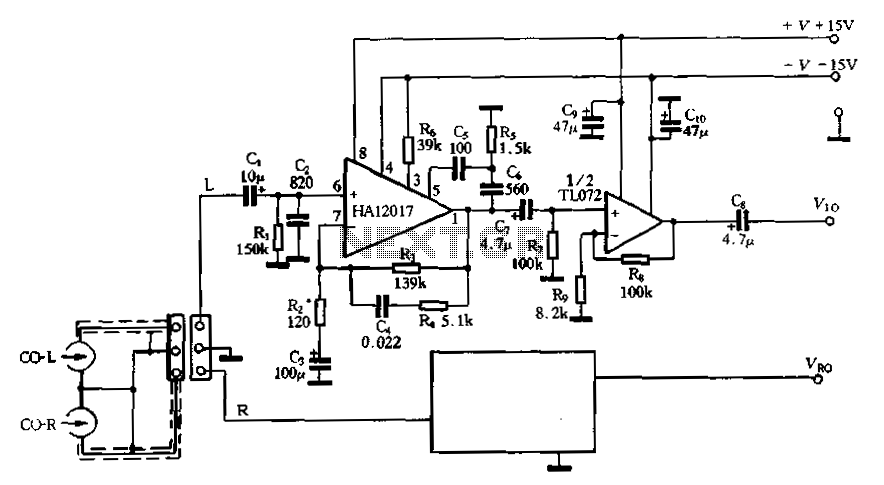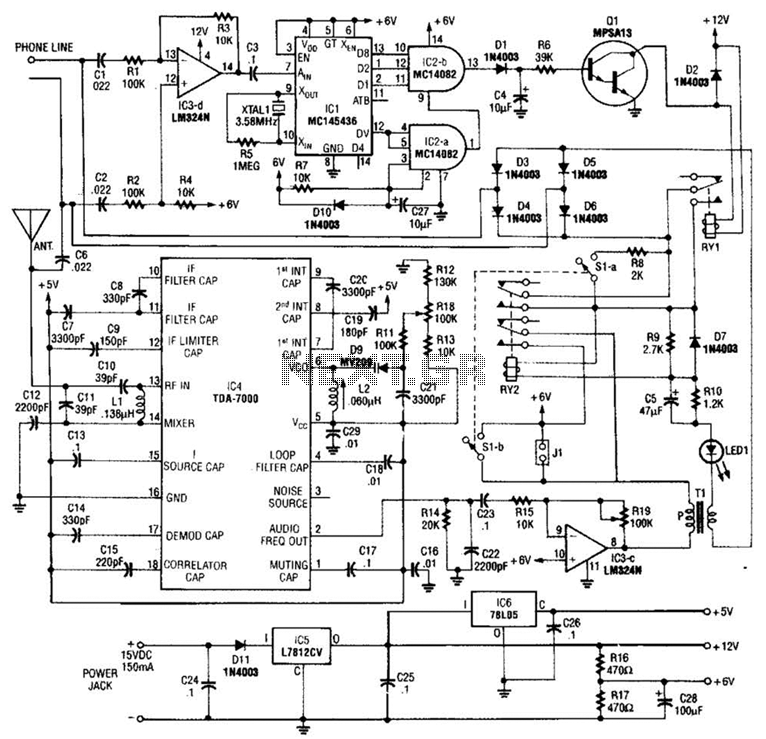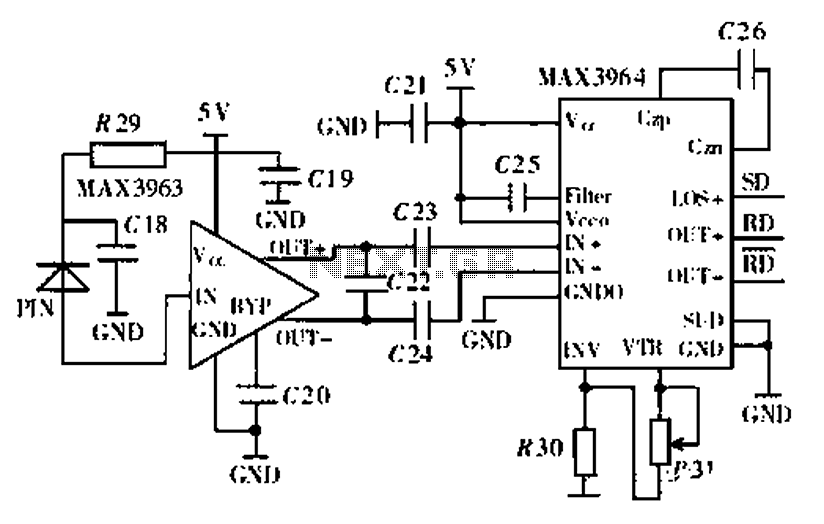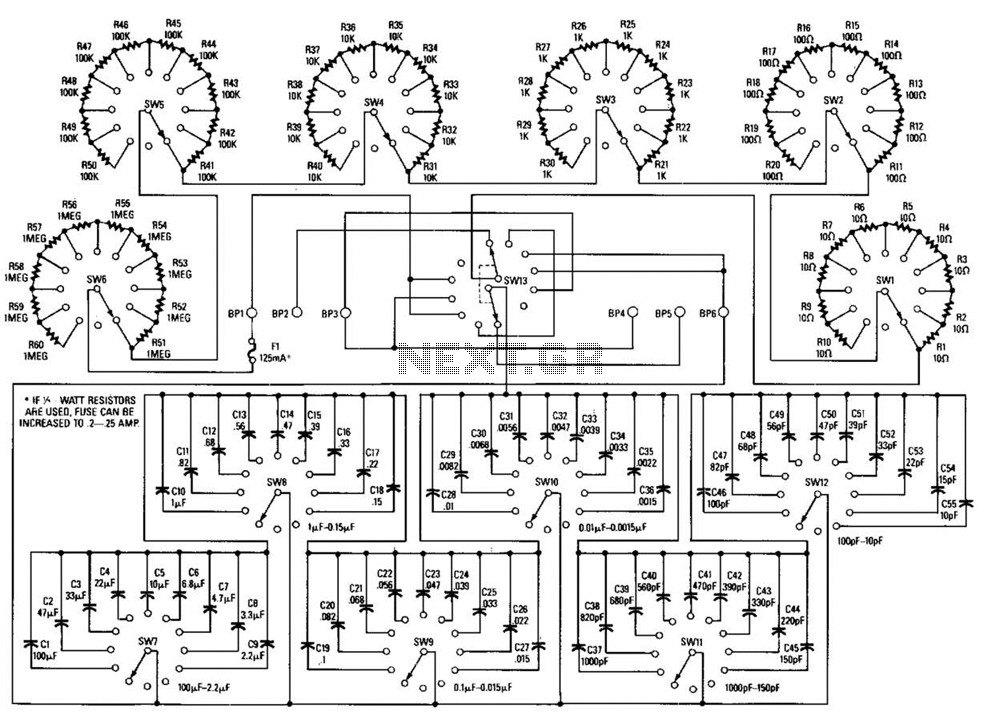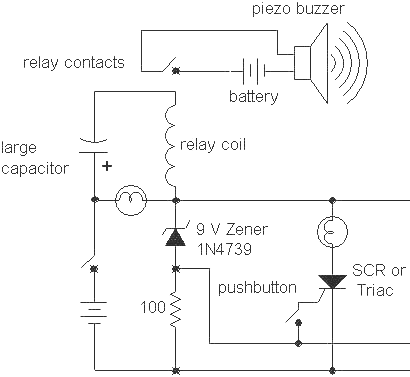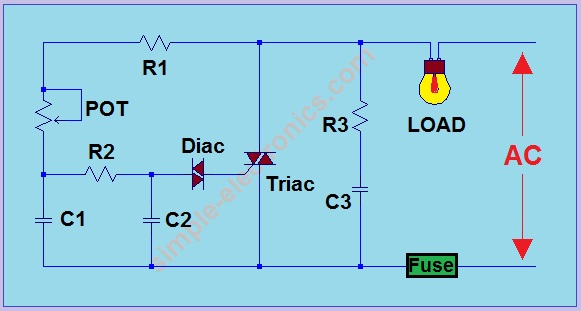
Timer circuit
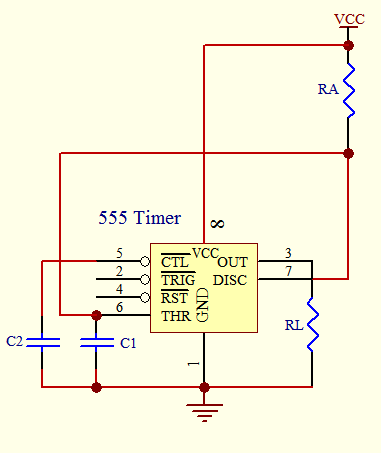
The timer circuit is utilized in various projects and is primarily categorized into two types. The first type is an analog RC circuit, where the charging of the capacitor determines the timing of the circuit. This type has a larger tolerance and is suitable for applications where timing is not critical, as it is influenced by the tolerance of the RC components. The second type involves crystal or ceramic resonators in conjunction with microprocessors, microcontrollers, or application-specific integrated circuits that require higher precision timing with tolerances of up to 5 parts per million (ppm). A commonly employed circuit is the 555 integrated circuit (IC), which is a highly stable controller capable of generating timing pulses. In monostable operation, the timing delay is controlled by one external resistor and one capacitor. In astable operation, the frequency and duty cycle are accurately managed by two external resistors and one capacitor. The applications of this integrated circuit include precision timing, pulse generation, timing delay generation, and sequential timing. In this mode, the device generates a fixed pulse whenever the trigger voltage falls below Vcc/3. When the trigger pulse voltage applied to pin 2 drops below Vcc/3 while its output is low, the internal flip-flop activates the discharging transistor Tr, causing the output to become high by charging the external capacitor C1 and simultaneously setting the flip-flop output. The voltage across the external capacitor C1 increases exponentially with the time constant T = RA*C1, reaching 2Vcc/3 at td = 1.1RA*C1. Consequently, capacitor C1 is charged through resistor RA. The longer the time constant RA*C1, the longer it takes for VC1 to reach 2Vcc/3, thus controlling the output pulse width. Once the voltage on capacitor C1 reaches 2Vcc/3, the comparator at the trigger terminal resets the flip-flop, activating the discharging transistor Tr. At this moment, C1 begins to discharge, and the output goes low. Astable operation is achieved by configuring the circuit appropriately. In this mode, the trigger and threshold terminals are interconnected to create a self-triggering multivibrator. When the output is high, the internal discharging transistor Tr is off, and VC1 rises exponentially with the time constant (RA + RB)*C. When VC1, or the threshold voltage, reaches 2Vcc/3, the comparator output at the trigger terminal becomes high, resetting the flip-flop and causing the output to go low. This activates the discharging transistor Tr, allowing C1 to discharge through the channel formed by RB and Tr. When VC1 falls below Vcc/3, the comparator output at the trigger terminal becomes high again, and the timer output returns to high. The discharging transistor Tr turns off, allowing VC1 to rise once more. The frequency of oscillation can be derived from the circuit parameters.
The 555 timer IC is renowned for its versatility in timing applications. In monostable mode, it functions as a one-shot pulse generator, producing a single output pulse in response to a trigger input. The duration of this pulse is determined by the resistor-capacitor (RC) network, where the time period (T) is calculated using the formula T = 1.1 * RA * C1. The charging and discharging of C1 through RA and the internal transistor Tr dictate the pulse width, making it ideal for applications requiring precise timing.
In astable mode, the 555 timer operates as an oscillator, generating a continuous square wave output. The frequency of oscillation is determined by both resistors RA and RB and the capacitor C. The output frequency (f) can be calculated using the formula f = 1.44 / ((RA + 2*RB) * C). This configuration allows for adjustable duty cycles, as the ratio of RA to RB influences the high and low times of the output waveform.
The 555 timer's internal architecture includes comparators, flip-flops, and a discharge transistor, all of which facilitate its operation in both modes. The comparators monitor the voltage levels at the threshold and trigger pins, while the flip-flop controls the output state based on these levels. The discharging transistor Tr provides a path for the capacitor to discharge, thus resetting the timing cycle.
The practical applications of the 555 timer IC extend to a wide range of fields, including automotive systems, industrial controls, and consumer electronics, where precise timing, pulse generation, and sequential operations are required. Its ease of use, combined with the ability to achieve various timing intervals and frequencies, makes the 555 timer an essential component in electronic design.Timer circuit has been used in many projects and there are basically 2 types that are used these days. One of them is the use of analog RC circuit where charging of the capacitor circuit determined the T of the circuitry.
This type of circuitry has larger tolerance and is used in applications where the T is not so critical as the T is affected by the tolerance of the RC components used. The other is the use of crystal or ceramic resonators together with microprocessor, microcontroller or application specific integrated circuit that need higher precision T in the tolerance of up to 5 ppm (parts per million). One commonly used circuit is the 555 IC which is a highly stable controller capable of producing timing pulses.
With a monostable operation, the T(time) delay is controlled by one external resistor and one capacitor. With an astable operation, the frequency and duty cycle are accurately controlled by two external resistors and one capacitor.
The application of this integrated circuit is in the areas of PRECISION TIMING, PULSE GENERATION, TIMING DELAY GENERATION and SEQUENTIAL TIMING. In this mode, the device generates a fixed pulse whenever the trigger voltage falls below Vcc/3. When the trigger pulse voltage applied to pin 2 falls below Vcc/3 while the its output is low, its internal flip-flop turns the discharging transistor Tr off and causes the output to become high by charging the external capacitor C1 and setting the flip-flop output at the same instant.
The voltage across the external capacitor C1, VC1 increases exponentially with the T constant T=RA*C1 and reaches 2Vcc/3 at td=1. 1RA*C1. Hence, capacitor C1 is charged through resistor RA. The greater the time constant RA*C1, the longer it takes for the VC1 to reach 2Vcc/3. In other words, the time constant RA*C1 controls the output pulse width. When the applied voltage to the capacitor C1 reaches 2Vcc/3, the comparator on the trigger terminal resets the flip-flop, turning the discharging transistor Tr on.
At this time, C1 begins to discharge and its output goes to low. An astable operation is achieved by configuring the circuit as shown above. In the astable operation, the trigger terminal and the threshold terminal are connected so that a self-trigger is formed, operating as a multivibrator. When its output is high, its internal discharging transistor Tr turns off and the VC1 increases by exponential function with the time constant (RA+RB)*C.
When the VC1, or the threshold voltage, reaches 2Vcc/3, the comparator output on the trigger terminal becomes high, resetting the F/F and causing its output to become low. This in turn turns on the discharging transistor Tr and the C1 discharges through the discharging channel formed by RB and the discharging transistor Tr.
When the VC1 falls below Vcc/3, the comparator output on the trigger terminal becomes high and the tmr. output becomes high again. The discharging transistor Tr turns off and the VC1 rises again. The frequency of oscillation is given as below. 🔗 External reference
The 555 timer IC is renowned for its versatility in timing applications. In monostable mode, it functions as a one-shot pulse generator, producing a single output pulse in response to a trigger input. The duration of this pulse is determined by the resistor-capacitor (RC) network, where the time period (T) is calculated using the formula T = 1.1 * RA * C1. The charging and discharging of C1 through RA and the internal transistor Tr dictate the pulse width, making it ideal for applications requiring precise timing.
In astable mode, the 555 timer operates as an oscillator, generating a continuous square wave output. The frequency of oscillation is determined by both resistors RA and RB and the capacitor C. The output frequency (f) can be calculated using the formula f = 1.44 / ((RA + 2*RB) * C). This configuration allows for adjustable duty cycles, as the ratio of RA to RB influences the high and low times of the output waveform.
The 555 timer's internal architecture includes comparators, flip-flops, and a discharge transistor, all of which facilitate its operation in both modes. The comparators monitor the voltage levels at the threshold and trigger pins, while the flip-flop controls the output state based on these levels. The discharging transistor Tr provides a path for the capacitor to discharge, thus resetting the timing cycle.
The practical applications of the 555 timer IC extend to a wide range of fields, including automotive systems, industrial controls, and consumer electronics, where precise timing, pulse generation, and sequential operations are required. Its ease of use, combined with the ability to achieve various timing intervals and frequencies, makes the 555 timer an essential component in electronic design.Timer circuit has been used in many projects and there are basically 2 types that are used these days. One of them is the use of analog RC circuit where charging of the capacitor circuit determined the T of the circuitry.
This type of circuitry has larger tolerance and is used in applications where the T is not so critical as the T is affected by the tolerance of the RC components used. The other is the use of crystal or ceramic resonators together with microprocessor, microcontroller or application specific integrated circuit that need higher precision T in the tolerance of up to 5 ppm (parts per million). One commonly used circuit is the 555 IC which is a highly stable controller capable of producing timing pulses.
With a monostable operation, the T(time) delay is controlled by one external resistor and one capacitor. With an astable operation, the frequency and duty cycle are accurately controlled by two external resistors and one capacitor.
The application of this integrated circuit is in the areas of PRECISION TIMING, PULSE GENERATION, TIMING DELAY GENERATION and SEQUENTIAL TIMING. In this mode, the device generates a fixed pulse whenever the trigger voltage falls below Vcc/3. When the trigger pulse voltage applied to pin 2 falls below Vcc/3 while the its output is low, its internal flip-flop turns the discharging transistor Tr off and causes the output to become high by charging the external capacitor C1 and setting the flip-flop output at the same instant.
The voltage across the external capacitor C1, VC1 increases exponentially with the T constant T=RA*C1 and reaches 2Vcc/3 at td=1. 1RA*C1. Hence, capacitor C1 is charged through resistor RA. The greater the time constant RA*C1, the longer it takes for the VC1 to reach 2Vcc/3. In other words, the time constant RA*C1 controls the output pulse width. When the applied voltage to the capacitor C1 reaches 2Vcc/3, the comparator on the trigger terminal resets the flip-flop, turning the discharging transistor Tr on.
At this time, C1 begins to discharge and its output goes to low. An astable operation is achieved by configuring the circuit as shown above. In the astable operation, the trigger terminal and the threshold terminal are connected so that a self-trigger is formed, operating as a multivibrator. When its output is high, its internal discharging transistor Tr turns off and the VC1 increases by exponential function with the time constant (RA+RB)*C.
When the VC1, or the threshold voltage, reaches 2Vcc/3, the comparator output on the trigger terminal becomes high, resetting the F/F and causing its output to become low. This in turn turns on the discharging transistor Tr and the C1 discharges through the discharging channel formed by RB and the discharging transistor Tr.
When the VC1 falls below Vcc/3, the comparator output on the trigger terminal becomes high and the tmr. output becomes high again. The discharging transistor Tr turns off and the VC1 rises again. The frequency of oscillation is given as below. 🔗 External reference
